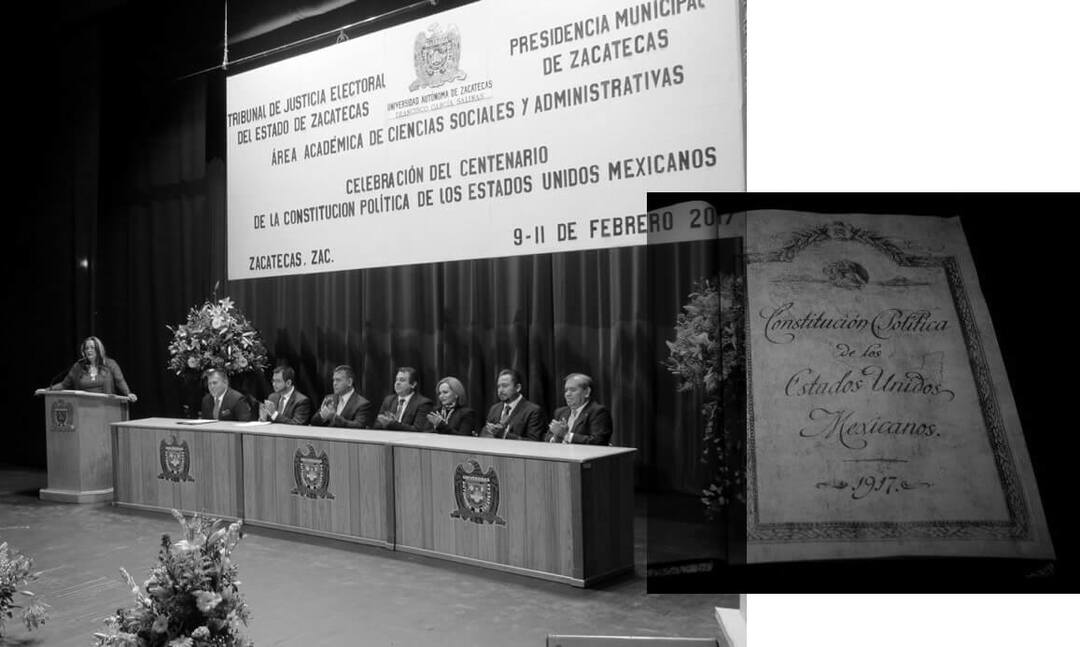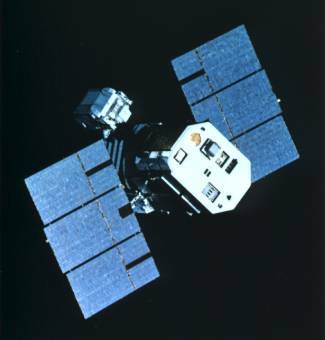15 Examples of Academic Speech
Examples / / June 30, 2022
The academic speech It is a text whose purpose is to expose or argue an idea that occurs in any context of formal education at different levels and disciplines. It is mainly characterized by a formal record, the rigor of the investigation and the seriousness of the exhibition of the results that encourage the creation and debate around knowledge and contribute something to the world of knowing For example: academic essay, thesis, dissertation.
Academic speeches are mostly made within educational institutions such as:
- schools
- Universities
- university hospitals
- Government institutes of education
- Academic research centers
This type of speech has above all purposes persuasive, informative and didactic; it expresses credibility and prestige as authoritative speech.
- See also: speech types
Characteristics of academic discourse
- Dissemination of disciplinary knowledge. Its main objective is to make something known or expand the information that is currently available on any aspect of life or the world in a complex and profound way. It is aimed at the members of a community of specialists, to support their training and mediate the interactions of that community.
- true data. You must have confirmed information. Any statement made by an academic discourse must have data and experiments that prove that the conclusions reached are indeed true and credible. For this, use the scientific method in which a hypothesis is tested. There are also other research techniques such as bibliographic review, ethnography, among others.
- Objectivity. It seeks to present a situation in the most realistic way possible without resorting to value judgments or opinions of a personal or subjective nature. A speech of this type is expected to handle truthful information and postulates that are demonstrable. Each statement must be supported.
- Structure. It must have a predetermined order that allows those who read it to understand what is being exposed clearly and following an established plan. It is usual that the structure of a written academic discourse begins with a synthesis, followed by an introduction, the proposal of the hypothesis, the theoretical development, the conclusions and the bibliographic references.
Types of academic speech
Depending on their intention, academic speeches can aim at different goals. Some of them are designed directly for a limited audience, for a specific objective or have a structure required by the place where they will be presented. Among the types we can find:
- Scientific popularization. It is one designed so that the population in general can understand a scientific topic. It usually has a simpler language and, although it has figures and data that corroborate the information, tends to explain the effects, the consequences and the impact that what is being said has on the community. For example: The heat wave is a stark example of the challenge India faces in ensuring its food security as the effects of climate change worsen, exacerbates its difficulties in raising agricultural productivity to international levels in order to feed a growing population of nearly 1.4 billion people. (Source: The New York Times).
- rebuttal. It is the one that seeks to prove that another academic publication is wrong. Discourses of this type are considered important because they update the areas of scientific knowledge by proposing new ways of understanding the world that are based on determining that certain theories of the past are not true, are outdated or are invalid. Refutation is reached because there are new technological tools to investigate or experiences and processes when it comes to areas of the social sciences. For example: In short, the quantity theory ignores that the "money supply" is an endogenous result of the economic process and not an exogenous datum that is given to us. His theoretical obsession is unidirectional –M pushes P up–, forgetting the boomerang effects that exist –P pushes M up–. A more realistic quantity theory, armored against these fundamental errors, would have to consider that M is divided into two parts: the money and the promises to deliver money (in certain formulations of the quantity theory they do appear differentiated, we will call them M' and M'' respectively). (Source: Juan Ramón Rallo).
- of innovation.It is the one known as thesis or final work. They are usually investigations that, based on a hypothesis that the student proposes, seek to analyze a problem or an idea demonstrating all the knowledge that you have acquired during the time that your study has lasted. study. Some theses can become books and be references for the scientific world. They exist at all levels of formal education: bachelor's, specialization, master's, doctorate and post-doctorate. For example: In summary, the results of this thesis showed that environmental concentrations of HCB modulate the AhR and TGF-β1 signaling pathways. This could contribute to the observed alterations in normal breast morphogenesis and exacerbate a phenotype. promigratory, both in normal epithelial cells and in neoplastic cells, generating a greater degree of malignancy. (Source: University of Buenos Aires doctoral thesis).
Academic Speech Examples
- Academic discourse on the history of education
Teaching in those times consisted of the transmission of a trade (a way of working) by family or local officiants (the village blacksmith taught his young apprentices, for example); and in a religious formation, which contained moral values, political considerations, eating habits and ritual mechanisms (such as praying or giving thanks before eating).
These teachings were given orally and by repetition, which limited learning to memorization and incidentally allowed the distortion of the message: everyone could memorize things in a different way slightly different.
- See the full article: essay on education
- Academic discourse on feminism
The virtues of analog reading are not sufficiently promoted today: the very limitations of the book, especially the paper one, which does not allow the magic of copy + paste and requires that we forget about the likes for a while, it becomes essential if we really want to learn about any subject.
Therefore, there is an urgent need for a strategy to promote the books of the great feminist voices, such as Virginia Woolf, Simone de Beauvoir, Judith Butler, Alice Walker or Simone Veil, when not contemporary authors who openly address the subject, such as Margaret Atwood, Chimamanda Ngozi Adichie or Gioconda Belli. Books, moreover, that the internet itself makes available to its readers, through legal or not so legal channels, and whose reading is therefore perfectly possible. Feminism becomes more real when these works circulate from hand to hand (or screen and screen), than through sterile and toxic discussion on social networks.
- See the full article: essay on feminism
- academic discourse on the bullying
The bullying o Bullying, if it needs to be defined, is sustained and relentless conduct of aggression toward an individual or a small group of individuals that occurs in the school setting. Its manifestations can be very diverse: beatings, insults and constant humiliations, the promotion of contempt group, the theft or destruction of school supplies, the "law of the ice" (selective social exclusion), and even the abuse sexual.
Whatever the personal limits that these toxic school behaviors cross, they always have cruelty and submission in common implacable treatment of the weak and the eradication of the notions of solidarity, tolerance and respect that, in theory, the school strives to promote.
- See the full article: essay on the bullying
- Academic discourse on human rights
At the beginning of the 21st century, we know that human rights are not universally respected and that in many places on the planet, in the first or third world, it is possible to find cases of eventual violations of these Rights. However, since the mid-20th century it has become increasingly difficult to carry out systematic human rights violations with impunity.
Several international tribunals have been convened on different occasions to judge events of a diverse nature, in which the human dignity in a significant way, and the culprits have been prosecuted and sentenced, no matter how long the events. For example, those responsible for the Srebrenica massacre during the Bosnian war (1992-1995), Radovan Karadzic and Ratko Mladic, were captured and tried by the International Criminal Tribunal for ex-Yugoslavia.
- See the full article: essay on human rights
- Academic discourse on social networks
Much has been said about the physical and psychological risks that are run when entering social network spaces. The warnings regarding computer security focus, in general, on the custody of data personal and private (phone numbers, credit card numbers, postal address) and in contact with strangers ("grooming”, “cyberbullying”, extortion), and not so much in the type of content that circulates in these spaces. This despite the fact that the latter is actually one of the aspects with the greatest impact on contemporary culture.
Numerous studies have been done in prestigious universities to try to define the emotional impact of social networks, trying to respond to an increasingly evident phenomenon: that we deposit in them a quantity of emotional content significant. In fact, a study on self-esteem and social networks by Penn State University in the United States highlighted the obvious in 2016: the continuous exposure to the lives of others that occurs in social networks has a devastating effect on the self-esteem of the Username.
- See the full article here: essay on social media
More examples of academic speeches
- Nuclear receptors: from the nucleus to the cytoplasm. Authors: Bibiana Ortega-Domínguez, Marlene Herrera-Ramírez and Angeles C. Tecalco-Cruz. TIP. 2015.
- Multisectoral analysis of the increase in electricity prices in the Mexican economy. Authors: Gaspar Núñez, Antonio Kido and Jaime Vaca. 2019.
- Life cycle hypothesis in Mexico: an analysis of income by gender. Authors: Isalia Nava and Mary Villeda. 2019.
- ICAVDEM: elaboration and validation of an instrument about beliefs in women with breast cancer. Authors: Karla Mariana Lince-Campos, Guadalupe Manuella Arenas-Ramírez and José de Jesús Silva Bautista. 2019.
- Factorial, personal and wealth inequality in Peru, 1950-2016. Authors: Favio Leiva, Germán Alarco Tosoni and Cesar Castillo. 2019.
- Exploratory trap fishing around Robinson Crusoe and Santa Clara islands, Juan Fernández archipelago, Chile. Author: Patrick M. Spider. 2000.
- Shortening estimation in chevron folds that have undergone post bending deformation. Authors: Alberto Vásquez, Gustavo Tolson, Elisa Fitz Díaz, Peter Hudleston. 2019.
- Age and origin of the continental paleobasin of Teocaltiche, Mexico. Authors: Norma González, José Aranda, Oscar Carranza, Carlos Ortega Obregón. 2019.
- Viral etiology of diabetes mellitus: a strong association? Author: Elena Nereida Valero. 2018.
- Low prevalence of obesity and high prevalence of low weight in inhabitants of the Andes of Venezuela. Preliminary results of the EVESCAM Study. Authors: María Infante, Juan González and José Valencia. 2018.
Interactive test to practice
Follow with:
- aesthetic discourse
- business speech
- argumentative speech
- Arguments with premises and conclusions
- Topics and ideas for thesis



